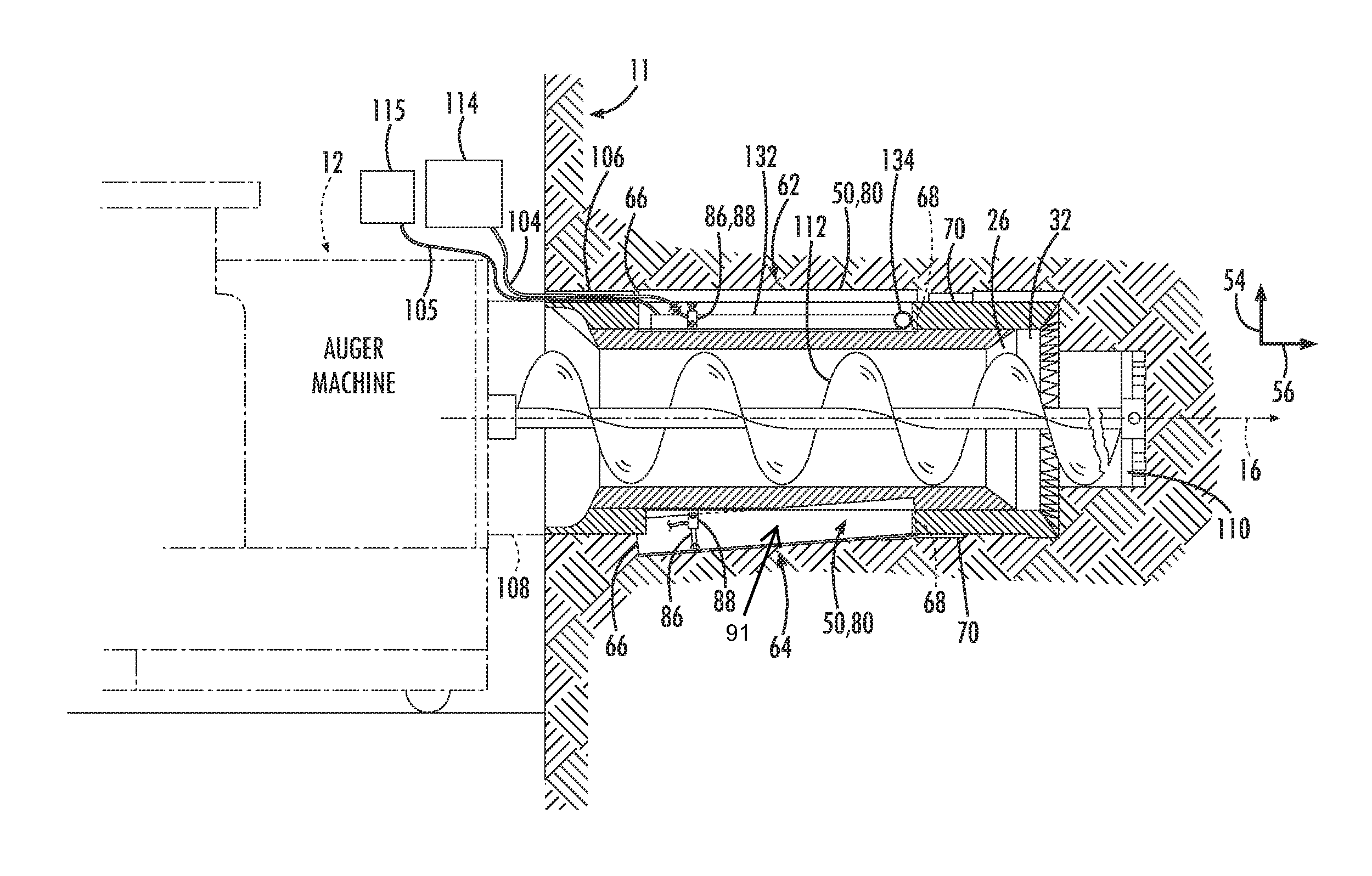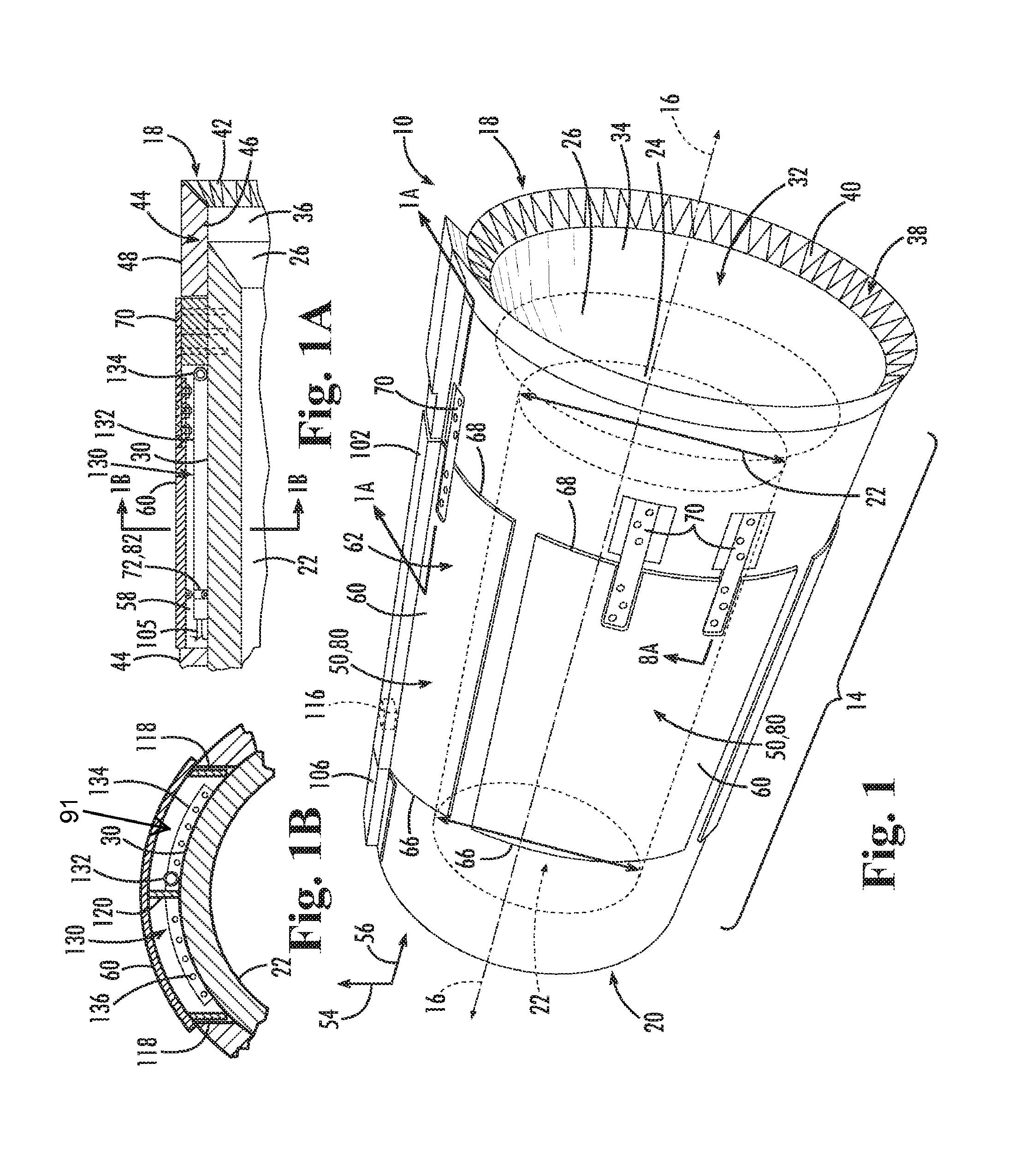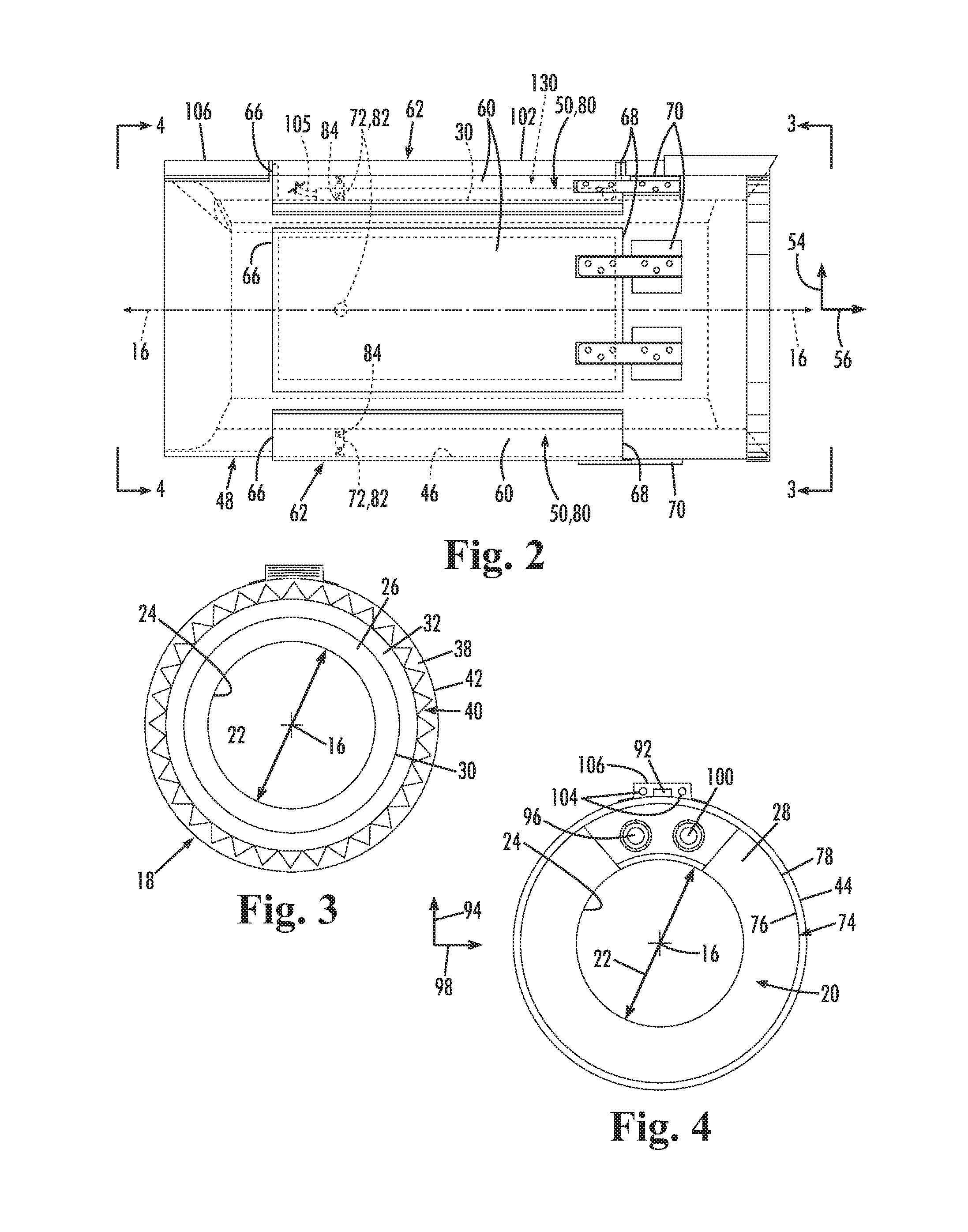Steering head
a steering head and head technology, applied in the direction of directional drilling, surveying, borehole/well accessories, etc., can solve the problems of limited vertical adjustment, inability to adjust the position of the steering head along a horizontal axis in these prior art steering heads, and the projection of the steering head can often not be completely closed, so as to improve the efficiency of the boring operation, the effect of efficient change of direction and more maneuverability in soil
- Summary
- Abstract
- Description
- Claims
- Application Information
AI Technical Summary
Benefits of technology
Problems solved by technology
Method used
Image
Examples
Embodiment Construction
[0040]Reference will now be made in detail to presently preferred embodiments of the invention, one or more examples of which are illustrated in the accompanying drawings. Each example is provided by way of explanation, not limitation, of the invention. In fact, it will be apparent to those skilled in the art that modifications and variations can be made in the present invention without departing from the scope and spirit thereof. For instance, features illustrated or described as part of one embodiment may be used on another embodiment to yield a still further embodiment. Thus, it is intended that the present invention covers such modifications and variations as come within the scope of the appended claims and their equivalents.
[0041]FIGS. 1 through 6 show an embodiment of the steering head 10 having a generally cylindrical body 14 defining a longitudinal body axis 16. The body 14 has a first body end 18 and an opposing second body end 20. The second body end 20 of the steering hea...
PUM
 Login to View More
Login to View More Abstract
Description
Claims
Application Information
 Login to View More
Login to View More - R&D
- Intellectual Property
- Life Sciences
- Materials
- Tech Scout
- Unparalleled Data Quality
- Higher Quality Content
- 60% Fewer Hallucinations
Browse by: Latest US Patents, China's latest patents, Technical Efficacy Thesaurus, Application Domain, Technology Topic, Popular Technical Reports.
© 2025 PatSnap. All rights reserved.Legal|Privacy policy|Modern Slavery Act Transparency Statement|Sitemap|About US| Contact US: help@patsnap.com



